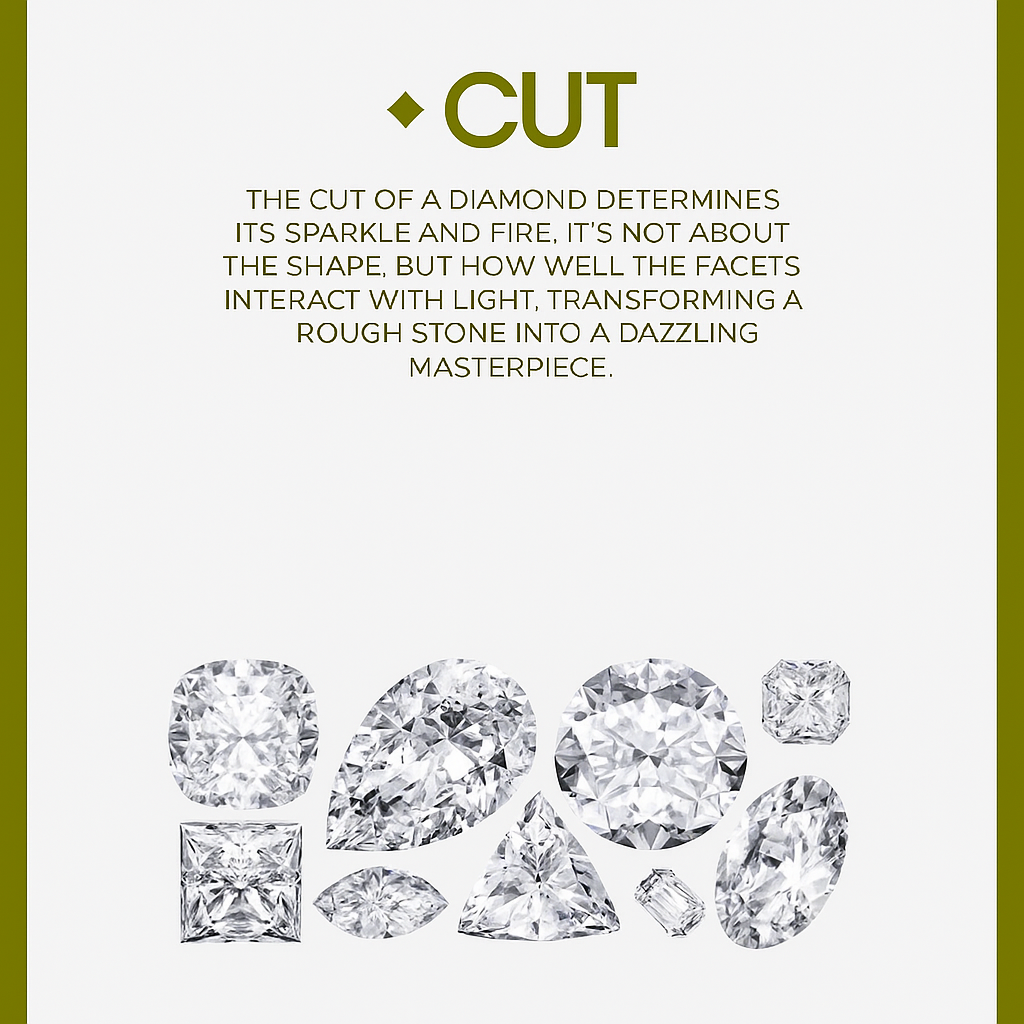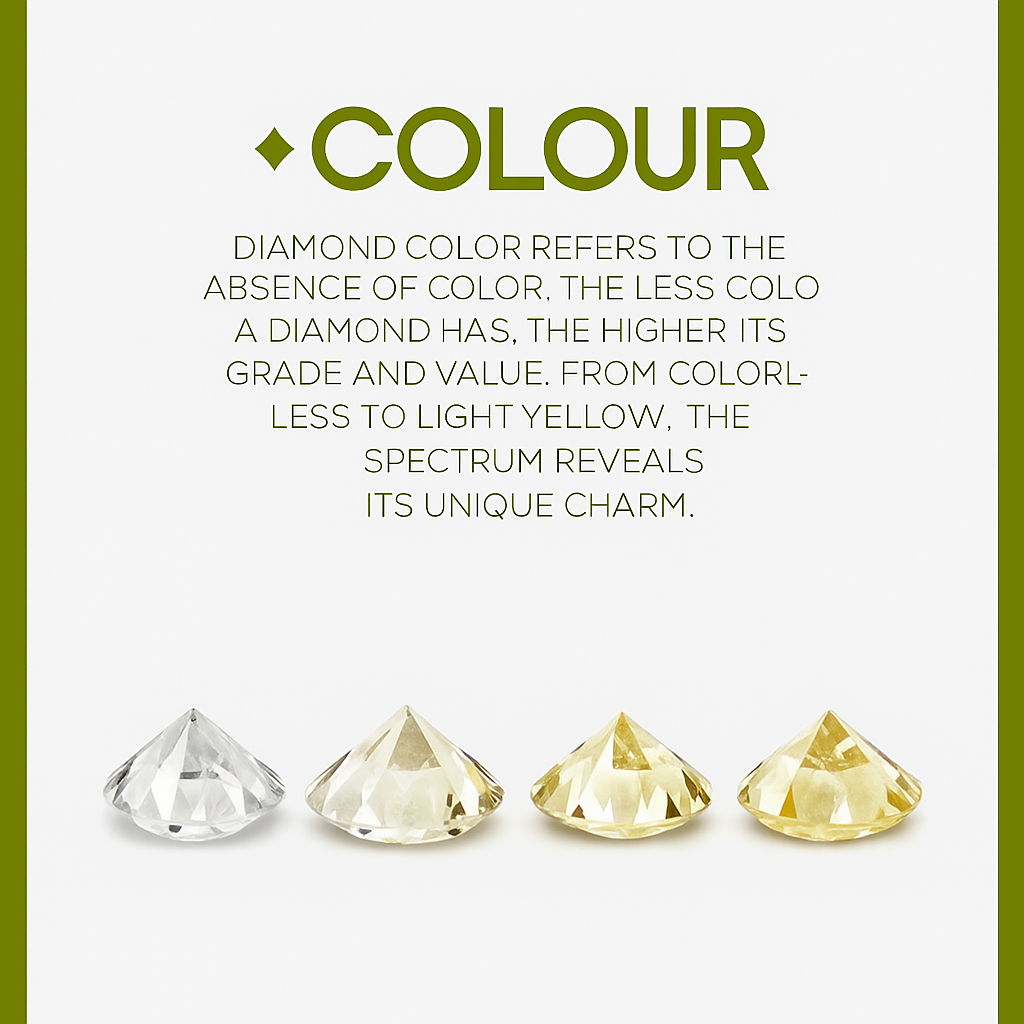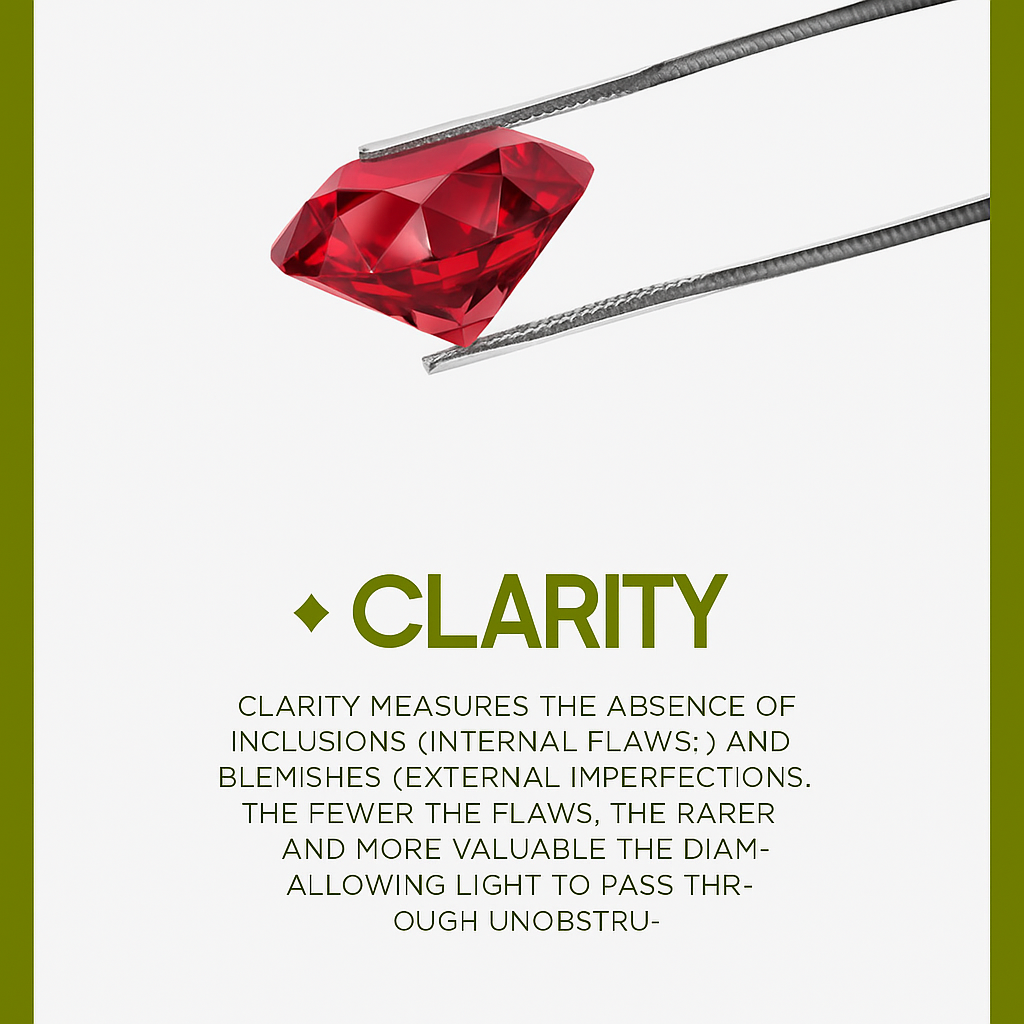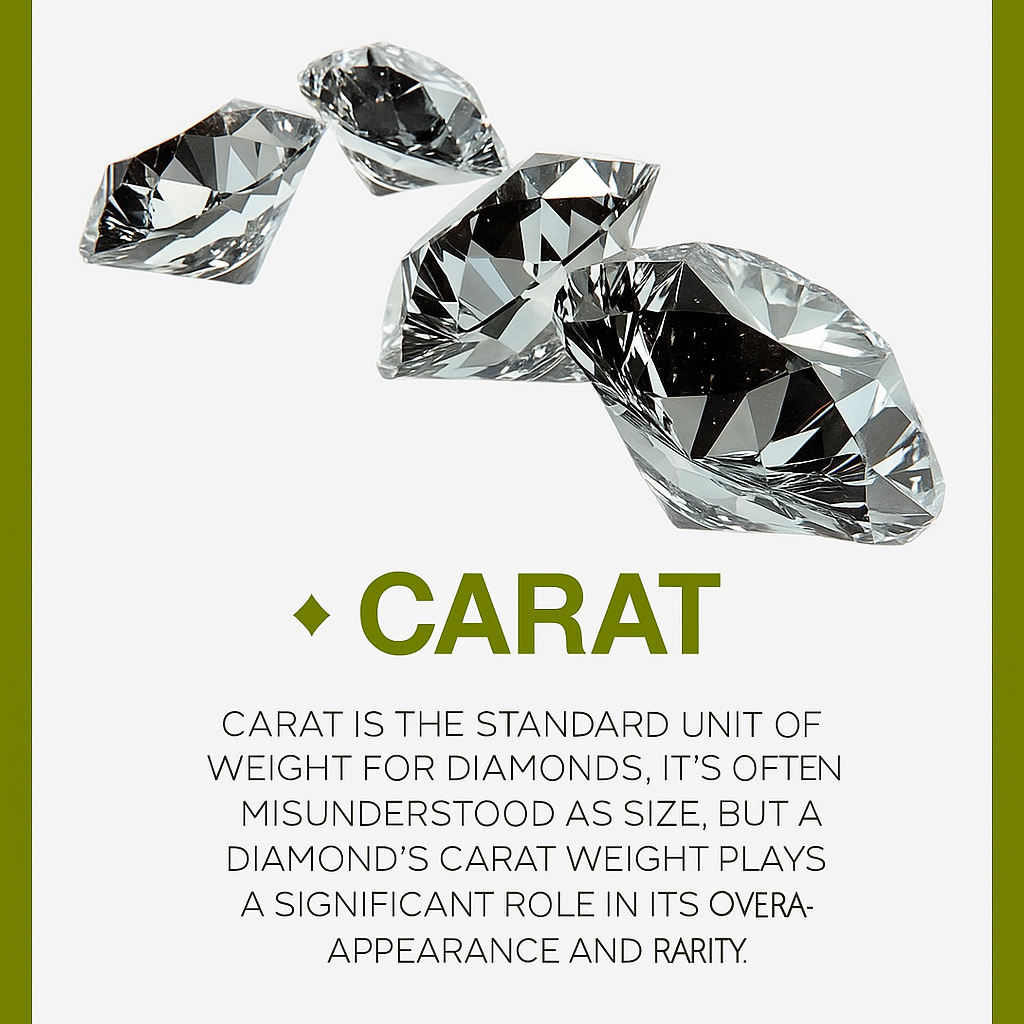Diamond Guide: The 4C's
Understanding the 4C's of Diamonds— Cut, Color, Clarity and Carat—is essential to making a well-informed choice. Each factor plays a role in a diamond’s allure, value, and uniqueness. Our guide will help you explore these characteristics, making it easier to select the perfect diamond for your style and preferences.

1. Cut: Bringing Diamonds to Life
A diamond’s cut is the most influential factor in its sparkle. More than just shape, cut refers to the angles, symmetry, and polish that affect how light interacts within the diamond. Expertly cut diamonds reflect and refract light with exceptional brilliance, fire, and scintillation—the qualities that give diamonds their iconic shimmer.
Diamond Cuts:
- Excellent: Maximizes brilliance, fire, and scintillation.
- Very Good: Excellent light performance, with minor compromises.
- Good: Good light performance, but some brilliance or fire may be lost.
- Fair: Noticeable light loss.
- Poor: Significant light loss, appearing dull.
At Craftier, we ensure each diamond cut brings out the best in the stone, whether it’s a classic round or a unique cushion cut.

2. Colour: The Art of Clarity and Light
Diamonds range from colourless to light shades of
yellow or brown. Colourless diamonds (D-F) are rare and
valuable, known for their pure sparkle and brightness. As color increases in
intensity, the grade moves toward the lower end (G-Z), with diamonds exhibiting
a slight tint.
At Craftier, we provide a range of colour grades
to suit diverse tastes. While colourless diamonds are prized, faintly coloured
diamonds offer a unique warmth and are ideal for specific settings. When
purchasing diamonds, consider that certain settings, like yellow or rose gold,
can make slightly tinted diamonds appear whiter, while white gold and platinum
enhance colourless diamonds' purity.

3. Clarity: Nature’s Signature
Diamonds are formed under intense pressure over millions of years, so it’s natural for them to contain tiny imperfections known as inclusions (internal) and blemishes (external). Clarity measures how clean or “pure” a diamond appears; the fewer the inclusions, the higher the clarity grade.
Clarity Grading Scale:
- FL and IF: Flawless and Internally Flawless, rare diamonds with no visible inclusions at 10x magnification.
- VVS1 and VVS2: Very, Very Slightly Included, inclusions are barely visible under 10x magnification.
- VS1 and VS2: Very Slightly Included, minor inclusions.
- SI1 and SI2: Slightly Included, inclusions visible under magnification but typically invisible to the naked eye.
- I1, I2, I3: Included, with visible inclusions that can affect transparency.
At Craftier, we carefully select diamonds that balance clarity with beauty, providing options that suit every preference and budget.

4.Carat: Weight vs. Size
The carat weight of a diamond is often mistaken
for its size. In reality, carat refers to weight, with one carat equaling 0.2
grams (roughly the weight of a paperclip). Carat weight can significantly
affect a diamond’s price, but it’s important to remember that size isn’t
everything; a well-cut diamond with lower carat weight can look just as
stunning as a larger stone.
Craftier offers diamonds in a variety of carat
weights to suit every style and budget. When multiple stones are included in a
piece, such as in a pair of earrings, we use Total Carat Weight
(TCW) to represent the combined weight of all stones in the
design.
Carat vs. Karat: While carat
measures the weight of diamonds and other gemstones, karat measures the purity
of gold. It’s essential to know this difference when choosing pieces with mixed
materials.
Additional Tips for Buying Diamonds
Prioritize Cut for Maximum Sparkle
A diamond's cut greatly impacts its brilliance; even a smaller diamond with an excellent cut can outshine a larger stone with a lower cut grade.
Consider "Near-Colorless" Diamonds
If you're looking for value, diamonds in the G-J range offer a nearly colorless appearance at a more affordable price.
Match Carat with Setting Style
Higher carat weights are ideal for simple settings to showcase the diamond, while smaller diamonds can shine beautifully in cluster or halo settings.
Understand Total Carat Weight (TCW)
When buying multi-stone jewelry, the TCW indicates the combined carat weight. It's crucial to differentiate TCW from individual carat weight to avoid misunderstandings.
At Craftier, we believe in offering diamonds that are as transparent as our values. Let us help you find the ideal lab-grown diamond to celebrate life's most cherished moments.
Do Diamonds Come in Colors?
While many think of diamonds as purely colorless, they actually come in a wide range of stunning hues, from vibrant blues to subtle pinks, yellows, and even reds. These colored diamonds, also known as fancy-colored diamonds, are highly sought after for their rarity and unique beauty.
How Do Diamonds Get Their Color?
Color in diamonds is a result of trace elements and natural processes during their formation. For example:
- Nitrogen gives diamonds a yellow or orange hue.
- Boron results in rare blue diamonds.
- Radiation exposure can produce green diamonds.
Grading of Colored Diamonds
Colored diamonds are graded differently from colorless diamonds, focusing on three main factors:
- Base Color: Primary color of the diamond, such as blue, pink, or yellow.
- Intensity: The depth of color, ranging from faint to vivid.
- Secondary Colors: Many colored diamonds display a secondary hue, like a purplish-pink or greenish-blue.


